The NVIDIA GeForce GTX 1660 Ti Review, Feat. EVGA XC GAMING: Turing Sheds RTX for the Mainstream Market
by Ryan Smith & Nate Oh on February 22, 2019 9:00 AM ESTCompute & Synthetics
Shifting gears, we'll look at the compute and synthetic aspects of the GTX 1660 Ti.
Beginning with CompuBench 2.0, the latest iteration of Kishonti's GPU compute benchmark suite offers a wide array of different practical compute workloads, and we’ve decided to focus on level set segmentation, optical flow modeling, and N-Body physics simulations.

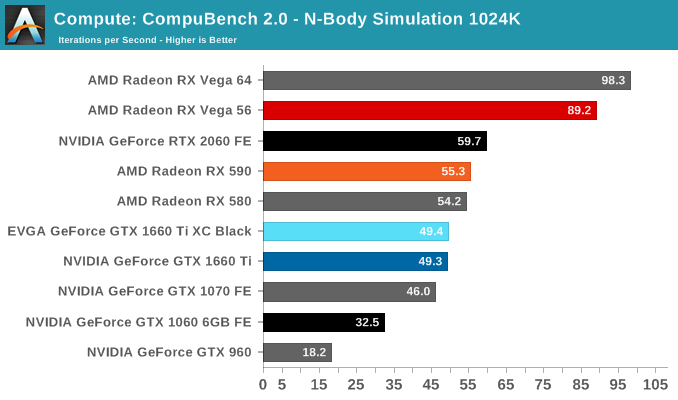
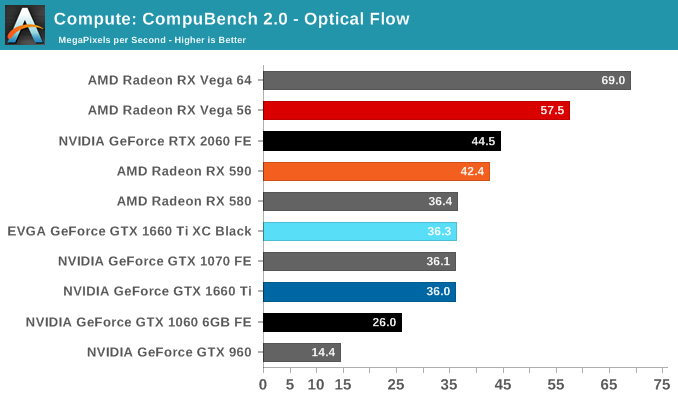
On paper, the GTX 1660 Ti looks to provide around 85% of the RTX 2060's compute and shading throughput; for Compubench, we see it achieving around 82% of the latter's performance.
Moving on, we'll also look at single precision floating point performance with FAHBench, the official Folding @ Home benchmark. Folding @ Home is the popular Stanford-backed research and distributed computing initiative that has work distributed to millions of volunteer computers over the internet, each of which is responsible for a tiny slice of a protein folding simulation. FAHBench can test both single precision and double precision floating point performance, with single precision being the most useful metric for most consumer cards due to their low double precision performance.
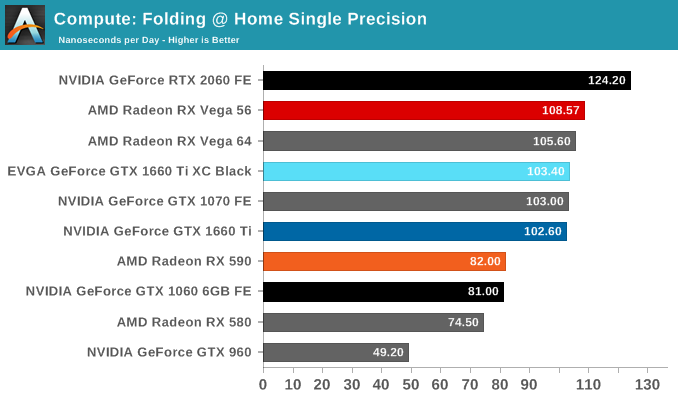
Next is Geekbench 4's GPU compute suite. A multi-faceted test suite, Geekbench 4 runs seven different GPU sub-tests, ranging from face detection to FFTs, and then averages out their scores via their geometric mean. As a result Geekbench 4 isn't testing any one workload, but rather is an average of many different basic workloads.
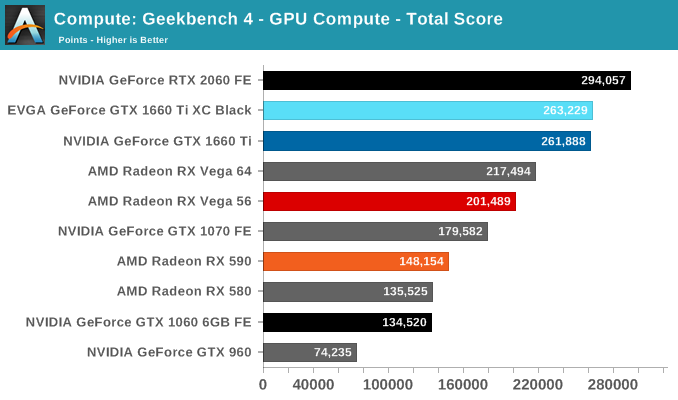
In lieu of Blender, which has yet to officially release a stable version with CUDA 10 support, we have the LuxRender-based LuxMark (OpenCL) and V-Ray (OpenCL and CUDA).
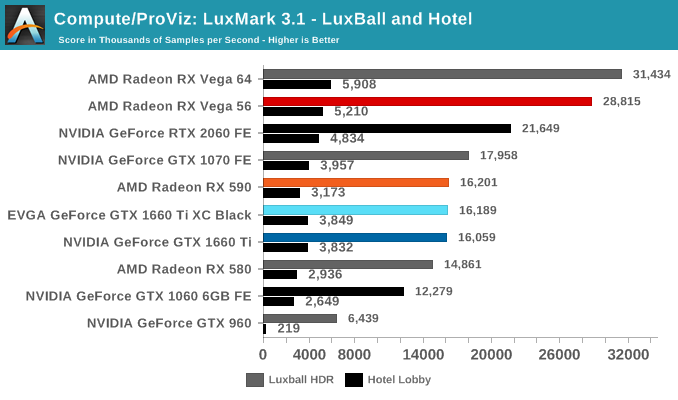
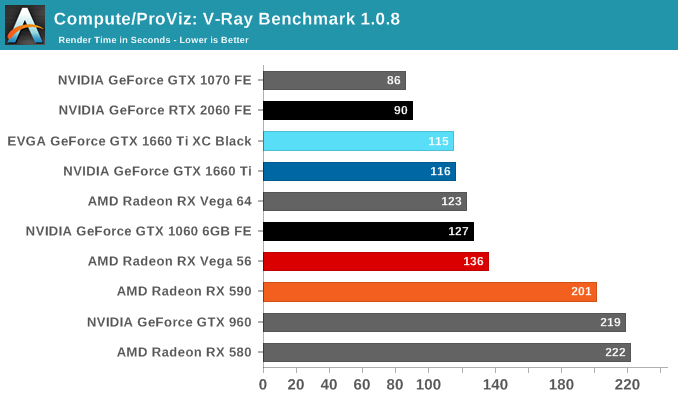
We'll also take a quick look at tessellation performance.
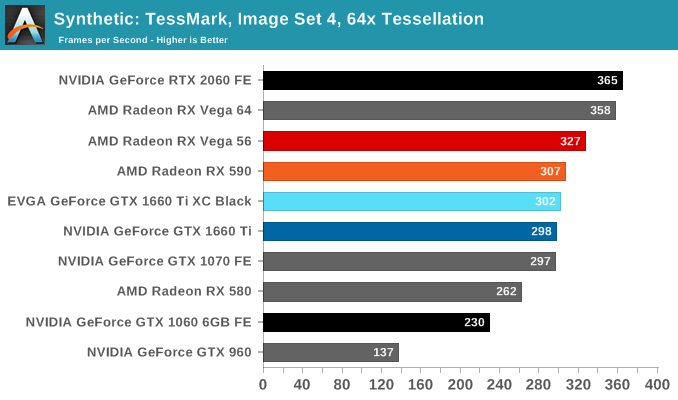
Finally, for looking at texel and pixel fillrate, we have the Beyond3D Test Suite. This test offers a slew of additional tests – many of which we use behind the scenes or in our earlier architectural analysis – but for now we’ll stick to simple pixel and texel fillrates.
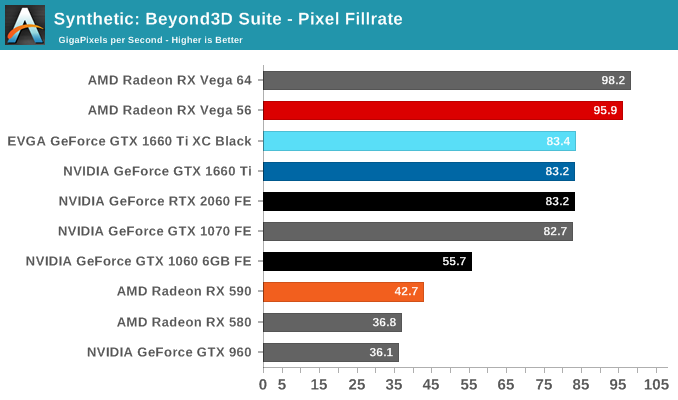
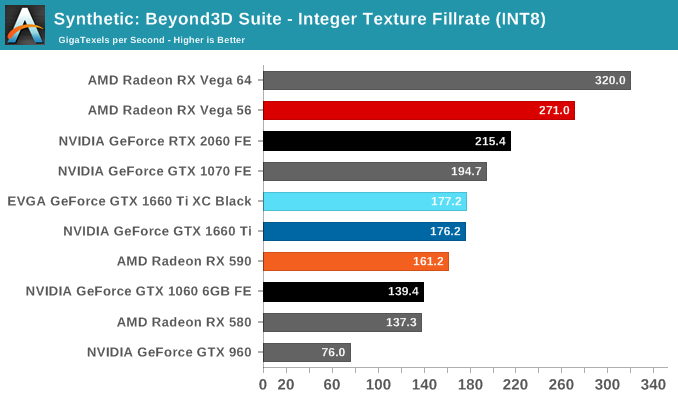
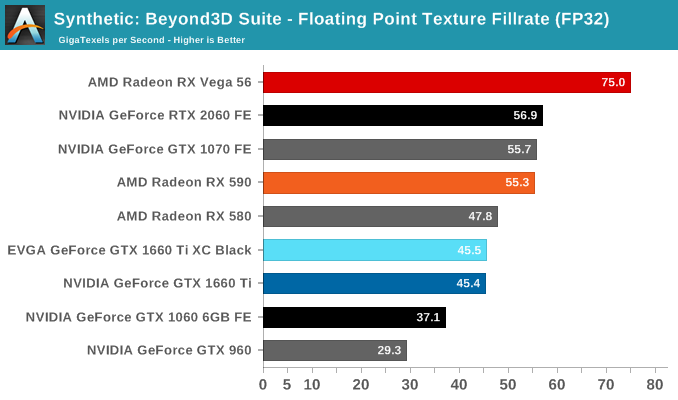
The practically identical pixel fill rates for the GTX 1660 Ti and RTX 2060 might seem odd at first blush, but it is an entirely expected result as both GPUs have the same number of ROPs, similar clockspeeds, same GPC/TPC setup, and similar memory configurations. And being the same generation/architecture, there aren't any changes or improvements to DCC. In the same vein, the RTX 2060 puts up a 25% higher texture fillrate over the GTX 1660 Ti as a consequence of having 25% more TMUs (96 vs 120).










157 Comments
View All Comments
peevee - Monday, February 25, 2019 - link
What are you talking about? 3-5% Look at 960 vs 1060, right there in this article. About 100%!Smell This - Monday, February 25, 2019 - link
Uhhh, Peewee?Get back to me when you compare the GTX 960 2GB specs to the 6GB GTX 1660 Ti specs (and the GTX 1060 3/6GB specs, as well).
I know it's hard for you. It's tough to hit all those moving targets (and goal posts) ...
eva02langley - Friday, February 22, 2019 - link
Not impressive at all when the Vega 56 sold for the same price with 3 AAA games and offering 15%+ performances.cfenton - Friday, February 22, 2019 - link
"Instead, AMD’s competitor for the GTX 1660 Ti looks like it will be the Radeon RX Vega 56. The company sent word last night that they are continuing to work with partners to offer lower promotional prices on the card, including a single model that was available for $279, but as of press time has since sold out. Notably, AMD is asserting that this is not a price drop, so there’s an unusual bit of fence sitting here; the company may be waiting to see what actual, retail GTX 1660 Ti card prices end up like. So I’m not wholly convinced we’re going to see too many $279 Vega 56 cards, but we’ll see."If Vega 56 becomes available for $279 regularly, then it will be a better deal. Right now, that price is only being offered on one model that you can't buy. The cheapest Vega 56 model on Newegg is $399 right now.
eva02langley - Friday, February 22, 2019 - link
You can get it for the same price, move on, it is the better deal. Also, expect higher price than MSRP from OEM creating special models with different coolers.And basically... RX 3080 is supposed to be between 250-300$ with Vega 64 + 15% performances. The interest of this card is going to be short lived.
MadManMark - Friday, February 22, 2019 - link
Yes, we know -- AMD's next card is always going to be the one to buy.But isn't it odd that by the time it stops being the "next" card and becomes the current card, suddenly it isn't that appealing anymore, folks like you immediately move onto the next "nest" card? Vega was the "next" card a year ago ...
cfenton - Saturday, February 23, 2019 - link
Where? I can't find one at that price anywhere, while there are several 1660TIs in stock at $279.Retycint - Tuesday, February 26, 2019 - link
Not anymore, no. As far as I've checked, all the $279 Vega 56s have sold out at the moment, and with AMD stating that it's a temporary price cut, I'm not expecting anymore $279 Vegas to come our way.Cellar Door - Friday, February 22, 2019 - link
You should try reading the actual article sometimes - once again 'jjj' with a pointless comment of the day.Ushio01 - Saturday, February 23, 2019 - link
It costs what a GTX1060 did at launch and offers GTX1070 performance which still costs more.